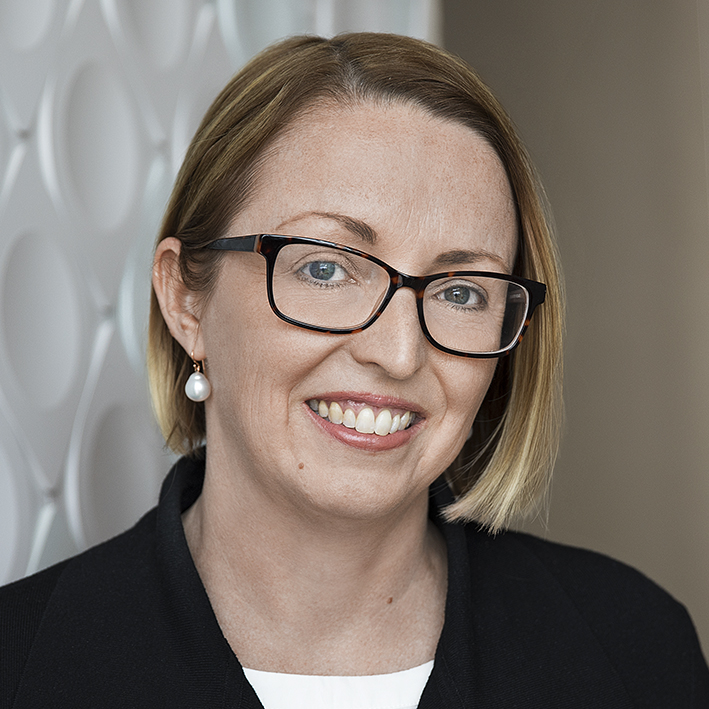
Partner
Vialto Partners

APAC, Lead of Global Mobility
Newmont
While finances are always a factor, the precious metal giant is focused on changing the employee mobility experience conversation from cost to value
As the APAC Lead of Global Mobility at Newmont Corp, Danae Bentley is certainly living in interesting times. The organization, which acquired Newcrest Mining Limited in late 2023, is now the world’s leading gold company and a major copper producer. Danae has played a key role in integrating the two organization’s global mobility programs amidst a post-COVID boom in employee mobility expectations and increasing interest from international regulators.
In the first session of the APAC Mobility Week 2024 webinar series, Vialto Partners’ Workforce Transformation & Mobility Managed Services APAC Leader, Selina Keller interviewed Danae about the challenges her organization has faced in transforming the mobility experience to deliver competitive advantage.
SELINA:
How much focus do you place on the stakeholder experience. What have you done to embed it within your organization?
DANAE:
One thing we’re really striving for, and that stakeholders tell us they want more of, is consistency. They want to know what to expect when they’re budgeting and preparing for projects. And they’re hoping that what we provide them through our global mobility program will look and feel similar, regardless of where they’re moving people to and from.
Given that we are dealing with different countries, family situations, businesses and stakeholders, consistency can be a challenging thing to achieve. But that’s what we need in order to have equitable and fair programs. It’s something we’re working on at the moment through the integration of our programs.
SELINA:
You mentioned delivering a similar experience using different looking packages. How does that work?
DANAE:
We want to provide equitable benefits or services or programs across the globe but offering exactly the same benefits and support might not make sense in every location. For example, the way people buy and sell houses is different from country to country.
We are looking at more regional approaches to some of the finer details in our policies. But the overall level of support – the way the employee feels – is similar, regardless of where their people are coming and going to.
SELINA:
How do you strike the balance between cost and employee experience?
DANAE:
More often than not we have projects that are heavily reliant on very specialised skills. So, it’s more about efficiency and timing and getting them there in time, and less about how much it’s going to cost. Because we are dealing with such challenging locations, it is also about attracting the right talent to the right places. So, I would say, while cost is always a factor, the experience and providing the right level of support is also very important.
We are trying to change the conversation from cost to value. Not just the value to the employee, but how much value does the support we are providing offer the organization. For instance, if we provide employees with familiarisation trips or additional destination services, can they hit the ground running? Start their job faster? Get their family settled more quickly? That sparks a different conversation with the stakeholder, because it is not just about what is it going to cost them. It is about how we are helping them to achieve their business objectives and in many cases that is more valuable.
SELINA:
I’m sure it hasn’t all been smooth sailing. What issues have you faced, and how did you address them?
DANAE:
I’d say there is more complexity than ever before. The number of SMEs that I need to involve in any one problem seems to be exploding. A few years ago, I could get on the phone to corporate tax or immigration and resolve something pretty quickly. Now, due to the overlapping compliance challenges, I need five different specialists in the room to solve one problem.
It feels a little bit like when we went through COVID, with the unique challenges from all the border shutdowns. Then as soon as all of that seemed to be over, we had this sudden explosion of everyone wanting to move, so we had to quickly change what we were doing in the business.
At the same time, all the regulatory bodies seem to be increasing their stringency around how they audit, especially how they look at immigration and tax compliance. That means there is a need to take precautions or add extra steps to make sure we’re doing things correctly. We’re also doing all that in the midst of an acquisition and the integration of two programs.
Sometimes I feel a little bit like I’m a gatekeeper for the business who just want things to happen quickly and don’t appreciate the increased compliance challenges we are trying to address. So, it’s been really challenging, but we’re getting there.
SELINA:
It seems like the ways people want and need to work are increasingly at odds with regulatory requirements. Are you putting any policies and processes in place to enable different ways of working?
DANAE:
We’re still going through a bit of an analysis phase to see if it is as bad as we think it is in terms of control and compliance. Are we going to have to define all these different types of mobility, or can we have a framework that helps us to make decisions on-the-go?
That’s our challenge. It’s no longer just short-term secondment, long-term secondment, FIFO worker. It’s now a longer list of scenarios that we’re having to respond to. And the business is expecting us to have answers very quickly, which we can’t always do.
So, yes, we’re looking at our policies and our practice. But alongside that, there’s a whole compliance framework that we’re looking to develop as well.
SELINA:
If you could think of one thing that might be good for moving the dial around employee experience, what would it be?
DANAE:
I’d say empathy. Putting yourself in someone else’s shoes, whether it’s the employee or the business. You can’t please everyone. But, if your intention is good, you can always help someone else. And that should impact employee experience in a positive way.
Contact us
For a deeper discussion on the above, please reach out to your Vialto Partners point of contact, or the expert below:
Selina Keller, Partner and APAC Workforce Transformation Leader
The information provided herein is for general informational purposes only and does not constitute legal, tax, or professional advice. Use of this information or website does not create a client or professional relationship. For tailored advice, consult a qualified professional. Vialto Partners, a wholly owned subsidiary of CD&R, and its global network (“Vialto”) make no warranties, express or implied, regarding the accuracy, completeness, or reliability of the content herein or otherwise. Vialto disclaims all liability, including indirect or consequential losses, arising from reliance on this information. Use of third-party links is for convenience only and does not imply endorsement or association. All content is the property of Vialto Partners or its designated owner and may not be reproduced or redistributed without permission. Reliance upon the information herein and the use of this site is at your own risk and subject to our Terms and Conditions of Use and Privacy Policy.
© 2025 Vialto Partners. All Rights Reserved.
Let's connect
Please reach out if you’d like to learn more about Vialto.